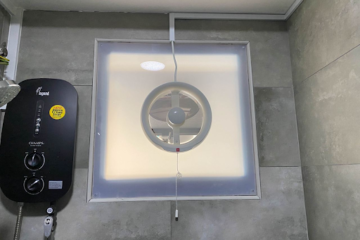Training healthcare staff on inventory tracking systems is crucial for efficient and effective management of supplies and equipment. With the advancements in technology, healthcare organizations now rely on innovative software solutions to streamline their inventory processes. In this article, we will explore why healthcare staff training is essential, discuss key steps to train healthcare personnel on inventory tracking systems and provide tips for successful implementation.
Why Staff Training is Essential
Healthcare organizations face numerous challenges when it comes to managing their inventories. The primary goal of implementing a healthcare inventory tracking system is to ensure that the necessary supplies are readily available when needed while minimizing waste and reducing costs. However, without proper training for their staff members, healthcare facilities risk the system’s failure.
Proper training ensures that all employees are knowledgeable about the system’s features and understand how to utilize them effectively. By investing in comprehensive training programs, healthcare organizations can empower their staff with the necessary skills to manage inventories efficiently. This helps the assets come in clutch as and when required.
Training Steps for Healthcare Staff
- Assessing Staff Needs
Before starting any training program, a thorough assessment of staff needs is critical. This involves identifying skill gaps among employees and determining the extent of their familiarity with inventory tracking systems. Assessing relevant competencies helps tailor training sessions accordingly. With this knowledge, you can take a more practical or literature-focused approach.
- Designing Training Modules
Once you have assessed your staff’s needs, it becomes easier to design targeted training modules that align with those requirements. Divide the content into different topics or modules based on factors such as job roles, responsibilities, and specific software functionalities. When segmented, it is easier to come back to a topic and take things at their own pace.
- Interactive Training Methods
Incorporate interactive methods to make training sessions engaging and increase employee participation. A combination of instructional videos, hands-on exercises using simulated scenarios or real data (while maintaining patient privacy), and practical demonstrations with sample devices/equipment can be highly effective in improving learning outcomes.
- Practical Application Exercises
Hands-on practice plays a pivotal role in effectively mastering inventory tracking systems’ operations. Collaborate with system vendors or implementers to create exercises that simulate realistic scenarios and workflows. This gives staff members an opportunity to practice using the system in a controlled environment. Try out common hospital scenarios to be prepared for all kinds of emergencies.
- Performance Evaluation
Implement periodic assessments to evaluate the staff members’ understanding and competency regarding the inventory tracking system. Conducting tests, quizzes, or skill assessments allows you to gauge their progress and identify areas where further training might be necessary.
- Continuous Learning Opportunities
Consider providing ongoing support for employees even after completing initial training programs. Providing resources like user manuals, online tutorials, and FAQs establishes a self-learning culture within your organization so that employees can continuously build on their skills as they encounter new challenges in using inventory tracking systems.
Tips for Successful Implementation
- Gain Support from Management
Obtaining clear support from management is crucial before initiating any staff training program on inventory tracking systems. Leadership buy-in helps secure budget allocations, ensures employee participation, and communicates the significance of this training endeavor to the entire organization.
- Communication is Key
Transparent communication between healthcare personnel, managers/administrators, and IT teams involved in implementing these systems facilitates smooth transitions and curtails resistance to change. Communicating the benefits of streamlined inventory management ensures staff members understand how it contributes toward better patient care.
- System Documentation
Alongside training materials, clear documentation is essential for users as reference material when encountering system-related queries or issues. Consider creating a manual encompassing frequently asked questions (FAQs), troubleshooting guidelines, process flows, and contact details of individuals responsible for technical support or guidance in using the inventory tracking systems.
- Supportive Culture
Creating a culture focused on continuous improvement entails fostering an environment where employees feel comfortable asking questions or discussing challenges they face while learning or using these systems. Encourage a sense of curiosity and learning in your employees.
Wrapping Up
By investing time in training healthcare staff on inventory tracking systems, organizations can facilitate seamless processes that alleviate operational burdens, eventually bringing substantial cost and time savings without compromising patient care. Practical staff training ensures that all healthcare professionals are well-equipped to navigate these systems with confidence, enabling them to contribute positively to the quality of healthcare delivery.
Keep an eye for more latest news & updates on Discover Tribune!




